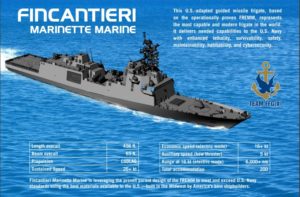
The final defense appropriations bill allows certain parts of the new FFG(X) future frigate program to be supplied from foreign sources, but requires a study on incorporating certain domestic components in later hull numbers. In June, Rep. Mike Gallagher (R-Wis.) offered an amendment to the House Armed Services Committee Seapower and Projection Forces version of the defense authorization bill that allows the Navy to award a contract that does not domestically source propulsion or certain auxiliary equipment. This aimed to…

 By
By 











